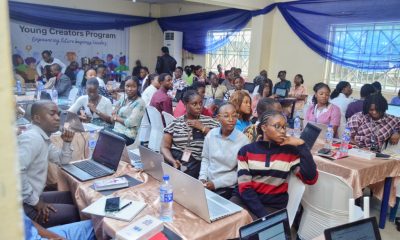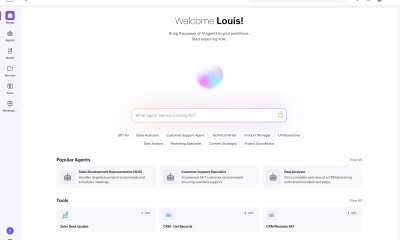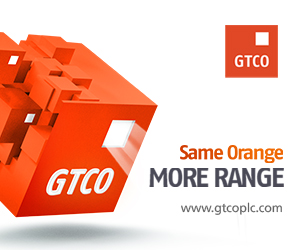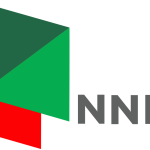Feature/OPED
Three Reasons Why Customer Experience isn’t Just About Existing Customers
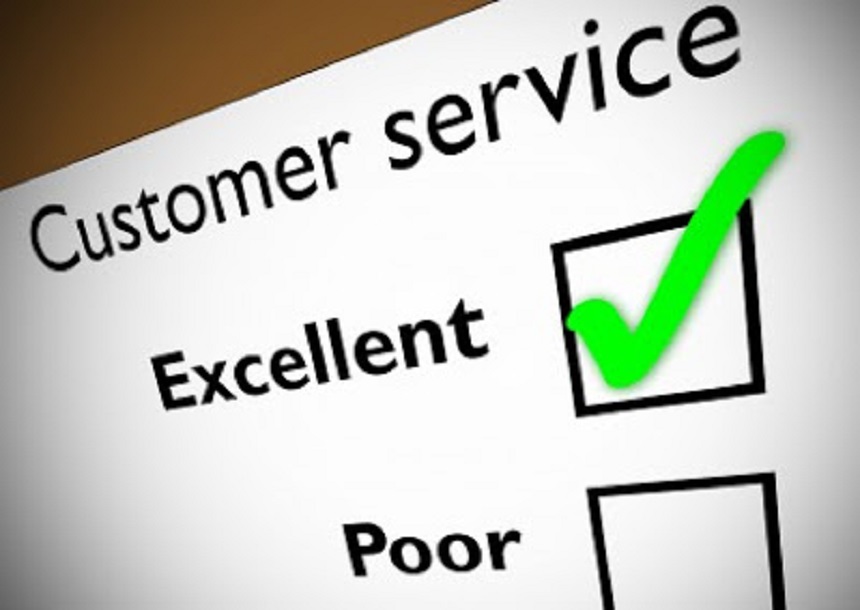
By Hyther Nizam
In today’s hyperconnected world, a bad shopping experience can drive a potential consumer to a competitor. While product and pricing used to be sufficient to separate a business from its competitors, this is no longer the case. Today’s consumers place a premium on speed, convenience, and professional and friendly service.
According to a 2018 PwC survey, consumers are willing to pay a premium for an amazing customer experience, and disgruntled customers are much more inclined to transfer their business elsewhere than to seek to remedy a terrible experience.
When people talk about customer experience, they frequently refer to existing customers. After all, it is substantially easier to market new products and services to existing clients than it is to acquire new ones. This is not to say that businesses should focus exclusively on existing customers. It is important for business growth to gain new clients, and customer experience (CX) plays a critical part in this process.
Optimise experiences for repeat customers
Remember that CX encompasses the totality of a customer’s journey (or journeys) with a brand or business. That means organisations have to understand what a customer experiences, right from the moment they feel the need to purchase and notice available options, to the subsequent research they do, zero in on your product/service, and make their final buy.
Beyond this, organisations need equally to ensure that each part of the journey is optimised to draw in new customers and retain their loyalty post-purchase with a delightful after-sales experience that turns them into repeat customers.
A potential customer enters the experience economy the moment he/she feels a psychological need for a product/service and decides to act on it. For organisations, this is the first organic CX touch-point. In today’s digital world, this touch-point can take the form of online advertising, appealing SEO-optimised websites, video testimonials, live chat, and sign-up forms. It’s clear that a good CX begins with impact-driven content that helps prospects find their way to what you have to offer.
It’s additionally important to remember that, while we might once have thought of the customer journey as linear, it’s increasingly obvious that this is not the case. A potential customer may go on tangents, get distracted and take breaks, and change the channels they’re using for research or to sign up as a customer. Organisations have to be able to cater to this non-linear approach while providing a consistently good experience if they’re going to keep attracting new customers.
Consider the generational shift in CX plans
Organisations also need to be cognizant of the fact that there’s a generational shift when it comes to customer experience. A recent survey shows, for example, that 51% of the Gen Z respondents ranked social media presence as the second highest factor, after “providing superior product/service quality”, for brands to maintain relevance; on the other hand, only 13% of Baby Boomers listed social media presence; moreover, 78% of Gen Z buyers said they research or look at customer reviews most of the time before purchasing from a new brand. Gen Zs are also more likely to identify “not being able to find the information I need online” as one of the most egregious examples of bad customer experience. Younger customers are additionally more likely to use community forums, in-app messaging, and webchat.
It’s pivotal, therefore, for organisations to understand this generational shift and bake it into their CX strategies. This helps design a well-rounded approach that’s considerate of traditional practices but at the same time forward-looking, which ensures that organisations don’t get left behind. To achieve this balance, organisations should look to move towards a true omnichannel approach, which provides seamless, high-quality experiences within, between, and across channels.
Build exceptional digital experiences
Research from Gartner shows that today, nearly half of customers can’t tell the difference between most brands’ digital experiences (DX), and as a result, 58% of customers also believe that DX does not impact what they end up buying. However, according to Gartner, a course-changing DX can positively impact brand preference by 37% and behavioural advocacy by 54%.
Customers expect brands to meet them where they are and creating digital experiences enables businesses to engage with potential new customers in meaningful ways. Digital experiences can help companies stay ahead of their competition and thrive in an ever-changing environment by providing 24/7 customer service and support and tailored offerings and interactions.
Hyther Nizam is the President MEA, Zoho Corporation
Feature/OPED
Publication Standards and Predatory Publishing in Africa

By Timi Olubiyi, PhD
I pray that the new year, 2026, unfolds with fresh opportunities, meaningful growth, and endless possibilities. Amid the many emerging topical issues, this piece focuses on a troubling trend in academia: the growing reliance on predatory publications and the declining pursuit of reputable, recognised journals.
For many academics, particularly early-career scholars, mid-career academics facing promotion bottlenecks, adjunct and contract lecturers under publish-or-perish pressures, and even senior scholars navigating international mobility aspirations, evolving global performance metrics, and global competitiveness, this piece is intended as a lifeline, offering clarity, guidance, and reassurance at a critical moment in evolving scholarly environment.
Predatory publications are sometimes legitimate outlets that promise rapid academic publication but without the expected integrity of research or known ethical reputation, and oftentimes quality is compromised for cash for these publications. This alarming trend is not only undermining careers but also diminishing the visibility and impact of knowledge in shaping global scientific discourse.
From an African perspective, the damage caused by predatory publishing goes far beyond wasted money; it quietly erodes academic credibility, blocks international mobility, and traps scholars within local systems that increasingly struggle to meet global university standards.
Predatory journals thrive where demand for publication is high, and support structures are weak. In many African universities from observation, promotion and appointment criteria emphasise quantity over quality and indexed publications.
The disturbing finding is that often times there are no clear differentiation between indexed and non-indexed publication. As a result, many university-based journals have become the default publishing route but these journals are largely not indexed in reputable databases like Scopus, Web of Science, ABDC (Australian Business Deans Council) and ABS (Association of Business Schools) journal ranking systems which should increase quality and standards. These non-indexed journals journals are sometimes institutionally encouraged, yet they rarely offer the global visibility, citation impact, or academic recognition required for international competitiveness.
For a scholar whose work never leaves these local publishing ecosystems, the world remains largely unaware of their research, no matter how insightful or relevant it may be. Yet perhaps the most painful consequence of predatory publishing is loss of global opportunities, and systematic underestimation of impact.
African academics are frequently judged as underperforming, not because they lack ideas, rigour, or relevance, but because their work is largely invisible on global platforms. From the author’s observation, a striking number of African scholars have no Scopus profile at all, or profiles are with very low visibility, despite years of teaching and publishing as experienced lecturers, senior researchers, and even professors. This invisibility feeds a damaging cycle because when it comes to international evaluation limited indexed output is seen and it is assumed that African scholars have limited scholarly contribution, while local systems continue to reward these non-indexed publications that do not translate into global recognition.
The danger becomes most visible when academics attempt to cross borders physically or professionally. Because for international job applications, visiting fellowships, postdoctoral positions, and global research collaborations increasingly rely on transparent metrics: indexed publications, citation records, journal rankings, and evidence of international engagement.
An academic who has published extensively in non-indexed or predatory journals may appear productive on paper locally, but he is invisible internationally. Hiring committees in Europe, North America, Asia, and increasingly the Middle East are trained to recognise predatory outlets; rather than viewing such publications as achievements, they quickly interpret them as red flags, questioning the rigour, ethics, and peer-review exposure of the candidate.
In this way, predatory journals do not merely fail to help academics they actively ruin their global prospects. The contrast between quality publishing and predatory publishing is very clear and obvious. Because quality publishing follows strict academic standards like peer review, transparency, and ethical practices, predatory publishing on the other hand ignores these standards and mainly exists to collect fees from authors without providing real scholarly value.
A single well-placed article in a reputable indexed journal can open doors to international conferences, editorial invitations, collaborative grants, and academic networks.
For example, Nigerian and Kenyan scholars who publish in respected international journals often find themselves invited to review manuscripts, join global research teams, or contribute to policy-oriented projects at the African Union, World Bank, or UN agencies. These opportunities rarely come from non-indexed or predatory outlets because such journals are not read, cited, or trusted beyond narrow circles. Visibility, in the modern academic world, is currency, and predatory journals offer the illusion of productivity without the substance of impact.
So, what is the future of African academics in a globalised academic labour market? As universities worldwide shift toward international rankings, global partnerships, and research impact metrics, African scholars’ risk being locked out not because they lack intellectual capacity, but because their work is trapped in publishing systems that the global academy does not recognise. The danger is a growing academic isolation, where African knowledge circulates locally but fails to influence global debates or attract global opportunities. The solution lies not in rejecting local journals outright, but in redefining academic ambition and preparedness.
African academics must increasingly think beyond local promotion requirements and prepare for international exposure from the outset of their careers. This means understanding journal indexing systems, targeting reputable outlets even if acceptance takes longer, and valuing revision and rejection as part of scholarly growth. Universities, in turn, must reform promotion criteria to reward quality, indexing, and impact rather than sheer volume. Training in research methods, academic writing, and ethical publishing should be institutional priorities, not optional extras.
Governments and regulatory bodies can support this shift by funding open-access publication in reputable journals and discouraging the use of predatory outlets in academic evaluation. The suspenseful reality is this: African academics stand at a crossroads. One path leads to rapid local advancement built on fragile publishing foundations, offering short-term comfort but long-term invisibility. The other path is slower, more demanding, and often frustrating, but it leads to global relevance, intellectual exchange, and genuine academic mobility.
Predatory journals promise speed and certainty, but they quietly close doors. Quality publications demand patience and rigor, but they open the world. For African scholars seeking international jobs, collaborations, and influence, the choice is no longer optional it is existential. The future of African academia depends not just on producing knowledge, but on ensuring that knowledge travels, is trusted, and is seen. In this new year and beyond be different, be intentional, be visible, and be globally relevant. Good luck!
How may you obtain advice or further information on the article?
Dr Timi Olubiyi is an expert in Entrepreneurship and Business Management, holding a PhD in Business Administration from Babcock University in Nigeria. He is a prolific investment coach, author, columnist, and seasoned scholar. Additionally, he is a Chartered Member of the Chartered Institute for Securities and Investment (CISI) and a registered capital market operator with the Securities and Exchange Commission (SEC). He can be reached through his Twitter handle @drtimiolubiyi and via email at [email protected] for any questions, feedback, or comments. The opinions expressed in this article are solely those of the author, Dr. Timi Olubiyi, and do not necessarily reflect the views of others.
Feature/OPED
Game of Power: Throne Reclaim

By Abba Dukawa
Kano politics has been thrown into fresh uncertainty following reports that the Kano State Governor, Abba Yusuf, is planning to defect from the New Nigeria Peoples Party (NNPP) to the All Progressives Congress (APC).
For years, Rabiu Musa Kwankwaso aspired to be Kano’s undisputed political kingmaker. He only succeeded in realizing this ambition by installing his perceived political godson as the current governor of Kano State.
His earlier attempts had failed; notably, the current governor is the only candidate Kwankwaso attempted to install twice.
Even before the recent attempt at reclaiming the political and power throne by its rightful owner, there were widespread insinuations that the relationship between the political godfather and godson was far from cordial, despite both camps publicly maintaining that all was well.
The governor’s recent move to cross over to the ruling party has been strongly opposed by the state party leadership and the NNPP’s national leader, Senator Rabiu Musa Kwankwaso. This development has triggered internal disagreements within the NNPP, particularly between supporters of the governor and loyalists of the Kwankwasiyya movement.
Since news broke of Governor Abba’s intention to defect to the APC, claims have circulated that he was acting with Kwankwaso’s consent. Those who believed that Governor Abba planned to defect with Kwankwaso’s approval made a grave misjudgment.
This is not a coordinated plan; rather, it is a political conflict akin to that between a father and a son.
From a rational political standpoint, the situation reflects a deep and intense struggle—a clear attempt at reclaiming the throne between the Governor of Kano State and the leader of the Kwankwasiyya movement, Senator Rabi’u Musa Kwankwaso.
By all political indicators, the governor’s effort to reclaim the throne appears aimed at securing absolute control and liberating himself from total submission to the national leader of the Kwankwasiyya movement.
In response to the unfolding conflict, the NNPP national leader has intensified efforts to rally federal and state lawmakers, local government chairmen, and party structures to remain loyal to him. Kwankwaso’s reaction has been firm but defensive.
Kwankwaso, addressing them, reportedly stated that it was evident the governor was abandoning the NNPP for the APC and that any member wishing to follow him was free to do so. He reminded them that they won the election by divine grace alone, asking rhetorically: “Will the God who gave us power in 2023 not still be there in 2027?”
He has denied any involvement in defection plans and reaffirmed his loyalty to the NNPP and its ideology, warning supporters against what he described as “betrayal. However, events on the ground tell a different story, as several local government chairmen, along with state and federal lawmakers, appear to be gravitating toward the governor’s camp.
Ahead of his anticipated defection and in a bid to strengthen his political base, the governor has reportedly been working behind the scenes to secure the support of National Assembly members and NNPP members of the State House of Assembly and the local government council chairman.
Although no official statement has been issued by the governor’s office since reports of the planned defection emerged, the body language of prominent government officials suggests that the plan is already in motion and that it is only a matter of time. So far, only the Speaker of the State Assembly, Yusuf Falgore, has publicly endorsed the governor’s planned defection. Sources also indicate that a significant number of local government chairmen have joined the governor’s defection train.
Blind Kwankwasiyya members ideologues fail to distinguish between political betrayal and the pursuit of independence. Politics, after all, is about survival and adaptation.
Most Kwankwasiyya members are youths. Where were they when Kwankwaso parted ways with Hamisu Musa, Musa Gwadabe, and Dauda Dangalan? Kwankwaso rose under mentorship before charting his own course. Where were they when Abubakar Rimi broke away from Aminu Kano in ’79-’80, pursuing his own path? When Abdullahi Ganduje split from Kwankwaso, he faced ridicule and insults.
These same critics should appreciate Abba Gida-Gida’s restraint in not publicly recounting the unpleasant experiences surrounding his emergence as governor under the NNPP.
The Kwankwaso–Abba conflict is, at its core, politics in its truest form—a search for solutions and self-determination. There is a clear distinction between betrayal in politics, the pursuit of solutions, and the quest for independence from total submission.
If Governor Abba succeeds in taking the bulk of NNPP’s structure to APC, it’ll be a major symbolic blow to Kwankwaso’s influence . It seems Kwankwaso’s biggest fear is Abba taking the state with him, leaving him with a movement without a state .
The plan Abba defection from the New Nigeria Peoples Party (NNPP) to the All Progressives Congress (APC) could reshape Kano’s politics significantly- APC regains dominance in Kano, strengthening its position ahead of 2027- NNPP’s national relevance takes a hit, struggling to recover from losing its only governor Kwankwasiyya faces a tough test without state power, potentially losing influence. New alliances might emerge as Yusuf’s move triggers political recalibrations across the North.
Game of Power: Throne Reclaim
Dukawa writes from Kano and can been reached via [email protected]
Feature/OPED
How Nigeria’s New Tax Law Could Redefine Risk in the Banking Sector

By Blaise Udunze
Nigeria’s new tax identification portal goes live nationwide tomorrow, Friday, January 1, 2026, marking a pivotal moment in the country’s fiscal and financial governance. Designed to modernise tax administration and strengthen taxpayer identification, the reform reflects a decisive shift in economic strategy by a government grappling with shrinking oil revenues, rising public debt, and widening fiscal deficits.
At the centre of this shift is a deeper integration of identity systems, banking data, and tax administration, most notably the adoption of the National Identification Number (NIN) as a tax identification mechanism for operating bank accounts. In parallel, banks will also begin charging a N50 stamp duty on electronic transfers of N10,000 and above, following the implementation of the Tax Act.
Individually, these measures may appear modest, even reasonable. Collectively, however, they signal a fundamental reordering of the relationship between the state, banks, and citizens with far-reaching implications for banking business, customer trust, financial inclusion, and credit creation.
Banks at the Centre of Fiscal Enforcement
Under the new tax framework, Nigerian banks are no longer merely financial intermediaries or corporate taxpayers. They are increasingly positioned as collection agents, reporting hubs, and frontline enforcement points for government revenue policy.
The linkage of NIN to tax compliance, combined with transaction-based stamp duties, reinforces a stark reality that the banking system has become the most visible and accessible channel through which the state now extracts revenue from citizens.
This expanded role exposes banks to a new layer of risk not just financial or operational, but social, reputational, and political risks that extend far beyond balance sheets.
A Structural Shift in the Banking, Tax Relationship
Historically, banks played a facilitative role in tax compliance, primarily through payment processing and remittance support. The use of NIN as a tax identifier marks a structural departure from this model.
Bank accounts are no longer merely financial tools; they are becoming gateways to tax visibility.
This shift fundamentally alters the risk profile of the banking business. Banks are now exposed not only to credit, market, and operational risks, but also to heightened social backlash, reputational damage, and political sensitivity, arising from their expanded enforcement role.
Account Friction and Slower Customer Onboarding
One of the earliest and most visible consequences of NIN-based tax identification is increased friction in account opening and maintenance.
Consequently, in a real sense, millions of Nigerians will continue to face challenges with the NIN system, including delays in enrolment and correction, biometric mismatches as well as inconsistencies between NIN, BVN, and bank records.
For banks, this translates into slower onboarding processes, higher rates of account restriction or rejection, and increased congestion across branches and digital platforms.
What should be a growth engine for deposit mobilisation instead becomes a bottleneck, resulting in lost customers, fewer transactions, and weakened scale advantages in an increasingly competitive banking environment.
Banks as the Face of an Unpopular Tax Regime
Perhaps the most underappreciated consequence of the new tax regime is the escalation of customer hostility toward banks.
When accounts are flagged, restricted, or subjected to enhanced scrutiny, customers rarely direct their frustration at tax authorities or policymakers. Instead, they confront the most visible institution in the chain, their bank.
Banks are increasingly blamed for account freezes, accused of colluding with government, and perceived as punitive rather than service-oriented institutions. This hostility is particularly pronounced among informal sector operators, small traders, artisans, and self-employed professionals with irregular income streams.
In a low-trust economy such as Nigeria’s, perception often outweighs regulation. Banks risk becoming the public face of coercive taxation, absorbing reputational damage for policies they neither designed nor control.
Erosion of Trust in the Banking Relationship
Banking fundamentally depends on trust that deposits are safe, transactions are private, and institutions act in customers’ best interests.
When NIN becomes a tax enforcement gateway, that trust begins to fray. Banks are no longer seen primarily as custodians of savings, enablers of enterprise, or neutral financial intermediaries. Instead, they are increasingly perceived as extensions of tax authorities, surveillance nodes, and compliance police.
Once trust erodes, customer behaviour adjust often in ways that undermine the formal financial system itself.
The Hidden Impact of the N50 Stamp Duty
The introduction of a N50 stamp duty on electronic transfers of N10,000 and above may appear trivial. In practice, it carries outsized implications.
For many Nigerians, especially low- and middle-income earners, electronic transfers are not discretionary transactions. They are salary payments, family support remittances, SME operating expenses, and routine commercial settlements.
Customers rarely distinguish between government levies and bank charges. The stamp duty will therefore be perceived as yet another bank fee, deepening resentment toward institutions already accused of excessive charges.
Behaviourally, customers may respond by breaking transactions into smaller amounts, increasing cash usage, or migrating to informal transfer channels, distorting transaction patterns and weakening the efficiency of the digital payments ecosystem.
Although banks merely collect the duty on behalf of the government, they will once again bear the reputational cost.
Threat to Deposit Mobilisation and Liquidity
Fear of tax exposure is a powerful behavioural driver. As NIN becomes closely associated with tax scrutiny and transaction charges mount, many customers are likely to reduce account balances, avoid lump-sum deposits, split transactions to stay below thresholds, or move funds outside the banking system entirely.
For banks, the consequences are clear, as these will result in slower deposit growth, volatile liquidity positions, and reduced capacity to fund loans.
Deposit mobilisation is the lifeblood of banking. Any policy that discourages formal savings weakens banks’ intermediation role and, by extension, the broader economy.
Reversal of Financial Inclusion Gains
Nigeria has invested more than a decade in expanding financial inclusion through agent banking, digital wallets, and tiered KYC frameworks. The use of NIN as a tax trigger threatens to reverse these gains.
Many newly banked individuals, particularly those at the base of the economic pyramid, may abandon formal accounts, revert to cash-based transactions, or rely on informal savings mechanisms.
The irony is stark as an identifier designed to formalise the economy may inadvertently push activity back into informality.
Rising Compliance, Legal, and Technology Costs
Operationally, integrating NIN as a tax identifier significantly increases banks’ compliance burden. However, institutions are expected to synchronise multiple databases, resolve inconsistencies at scale, implement continuous monitoring systems while also managing customer disputes arising from mismatches or wrongful flags.
The challenges inherent in these demands require heavy investment in IT infrastructure, expanded compliance teams and enhanced cybersecurity. The costs either erode profitability or are passed on to customers, further fuelling public resentment.
Credit Creation and Economic Growth at Risk
Reduced deposits, higher compliance costs, reputational strain, and customer attrition converge on a single outcome that mainly constrained lending capacity.
There is no two ways about this, banks under sustained pressure will tighten credit standards, reduce SME and consumer lending, and favour low-risk government securities. The ripple effects include slower job creation, constrained entrepreneurship, and, on a dangerous level, it leads to weaker economic growth, ultimately undermining the very revenue base the tax reform seeks to expand.
Revenue Without Ruin
No doubt, linking NIN to tax identification and expanding transaction-based levies may enhance government visibility over economic activity, but in reality they carry significant unintended consequences for banking business.
They risk weakening customer trust, undermining deposit mobilisation, reversing financial inclusion gains, increasing operational and reputational risks, and constraining credit growth.
Banks do not oppose taxation. What they caution against is turning financial inclusion infrastructure into a blunt instrument of tax enforcement without adequate safeguards.
For the policy to succeed without damaging the banking system, regulators must ensure clear thresholds and exemptions, strong data protection guarantees, phased implementation and ensure sustained public education to redirect hostility away from banks.
Ultimately, the critical question is not legislative readiness but execution, especially coordination across institutions, technological preparedness and the capacity to prevent unintended disruption to businesses and citizens alike. The authorities must understand that when revenue meets risk, wisdom lies in balance.
Blaise, a journalist and PR professional, writes from Lagos and can be reached via: [email protected]
-

 Feature/OPED6 years ago
Feature/OPED6 years agoDavos was Different this year
-
Travel/Tourism9 years ago
Lagos Seals Western Lodge Hotel In Ikorodu
-

 Showbiz3 years ago
Showbiz3 years agoEstranged Lover Releases Videos of Empress Njamah Bathing
-
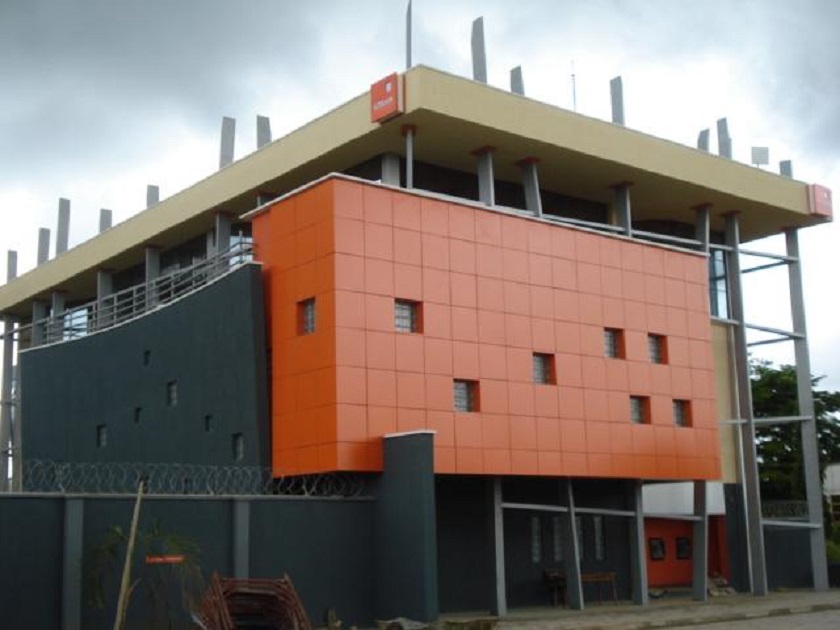
 Banking8 years ago
Banking8 years agoSort Codes of GTBank Branches in Nigeria
-
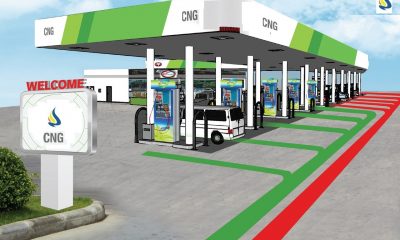
 Economy3 years ago
Economy3 years agoSubsidy Removal: CNG at N130 Per Litre Cheaper Than Petrol—IPMAN
-
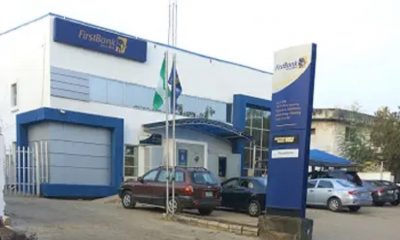
 Banking3 years ago
Banking3 years agoFirst Bank Announces Planned Downtime
-
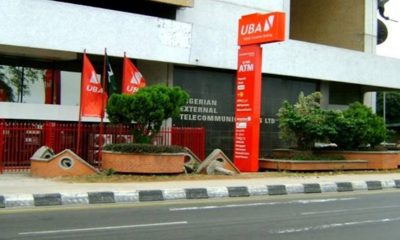
 Banking3 years ago
Banking3 years agoSort Codes of UBA Branches in Nigeria
-

 Sports3 years ago
Sports3 years agoHighest Paid Nigerian Footballer – How Much Do Nigerian Footballers Earn



